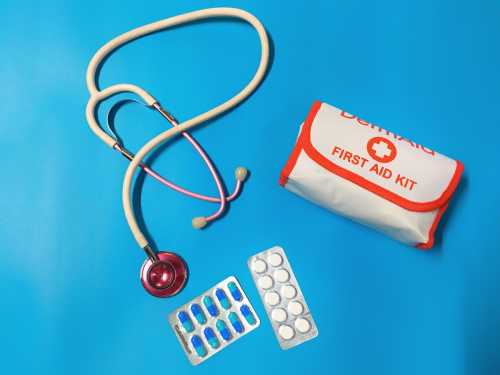Top 10 reasons why your site is slow and how to fix it
Website speed is a crucial factor to rank higher in search engines. Google has been rewarding fast-loading websites and ranking them higher in the search engine results pages (SERPs).
Slow loading websites can be frustrating for the visitors and can lead to abandonment of the website. It also affects your conversion rates as people will abandon your site if it takes too long to load.
In this article you can find 10 tips to make your website faster and more efficient.
The importance of a fast loading website #
A high-performing website improves the user experience. When you make a site faster, you improve the user experience because the content is delivered faster. Additionally, users are more likely to care about what you have to offer when your website is faster. Not one user cares about the content of a site that doesn’t load quickly.
A slow website has a measurable impact on user engagement as well. For every 0.1s improvement in site speed, Deloitte found that user engagement increased by 5.2% and bounce rate decreased by up to 5.8%.
In addition to user engagement and lower bounce rates, Google Search now considers Page Experience as a ranking factor.
Why is my site so slow anyway? #
There are many reasons for slow websites, but the most common one is that there is too much content that has to be downloaded on each page. As the web and mobile devices become more powerful, we are seeing sites that are becoming more complex. This often results in a site being slow. This can be due to large images, custom fonts, or too much javascript on the page. It's important to prioritise what needs to be downloaded first and what can not wait until later on in the process so that you do not overwhelm your visitors with information and slow them down at the same time.
10 Simple Tips for Speeding Up Your Website #
1. Implement a caching strategy
A caching strategy is a way of storing a copy of the content in a cache, or in a location that is closer to the user, so that the content can be delivered quicker. The term cache refers to any temporary storage location for data or files. The web browser caches resources like images and scripts on your computer or mobile device. A Content Delivery Network (CDN) caches copies of content on servers around the world, and closer to users, for faster delivery to end users.
https://web.dev/love-your-cache/
2. Switch to HTTP/2.
Only 66% of all websites in June 2022 were served using HTTP/2 or above on both desktop and mobile settings. While it will require a change on the server, HTTP/2 will make your applications faster, more robust, and simpler. It is usually possible to enable this on the hosting server. In addition, you might be able to fix the problem by switching to a CDN (Cloudflare, AWS, CloudFront, etc.).
https://web.dev/performance-http2/
3. Optimise your images.
Unoptimized images slow down websites. Therefore, saving your images with the right dimensions and optimising them for the web is vital since images can easily account for 60%-85% of a typical website's bandwidth. Quick results can be achieved by compressing images, or using modern file formats (webp, avif) that are much smaller in file size than traditional file formats (jpg, png) without losing quality. Or use image automation solutions where the server automatically serves the smallest size based on browser and device characteristics
https://web.dev/uses-optimized-images/
https://web.dev/uses-webp-images/
4. Add a CDN.
Content Delivery Networks (CDNs) provide alternative servers from which users can download the content. Since these servers are spread across the globe, they are geographically closer to your users, resulting in a quicker response and download time for the content. Besides serving static files, CDNs are getting smarter, it is possible to run logic closer to the user, which also reduces the load on your own web server(s).
https://web.dev/content-delivery-networks/
Curious how we can improve your performance?
We help businesses worldwide increase customer engagement and sales by making their websites faster.
5. Remove unnecessary JavaScript
JavaScript is the most common language used on the web. It is also a language that requires a lot of processing power. When JavaScript is not needed, it should be removed.
Remove JavaScript that is not necessary for the user experience, and lazy load JavaScript only when it is needed by the user.
6. Reduce the number of requests
The use of images, fonts and 3rd party scripts can increase the loading time of a webpage. This is why it is important to reduce the number of requests.
Images and fonts can be a big problem when it comes to loading time. In order to ensure that our webpage loads quickly, we need to reduce the number of requests. Lazy loading is one way to reduce the request. Lazy loading is the process of delaying the loading of images and other media until they are visible in the viewport. But above all, really only load what is needed and used, the fastest request is no request.
https://developer.mozilla.org/en-US/docs/Web/Performance/Lazy_loading
7. Minimise the number of redirects in your site.
Whenever you redirect someone from one page to another, the browser reloads the new page, which takes time and slows down the loading process. Not only does it load another page with all its resources. A redirect creates network latency, which is greater when there is a redirect to another domain, and is especially experienced by mobile users.
8. Compress files using Gzip or Brotli.
Gzip and Brotli are two of the most popular data compression formats. Both are open source, so anyone can use them.
Brotli is a data compression format that is optimised for use on the web. It is a successor to gzip, which it aims to replace. Brotli’s main goal is to reduce the size of web pages and speed up page loading time by 20% on average.
The difference between gzip and brotli is that brotli compresses files more efficiently than gzip does, but it's not as widely supported as gzip and it's not as fast at decompressing files.
9. Use resource hints
There are many ways to optimise a site's performance, but one of the most effective methods is resource hints. Resource hints are instructions that tell browsers how to load resources on a page more quickly. These hints can be implemented by using HTTP headers or link tags in HTML code, and they allow you to tell browsers what critical assets they should fetch first, when they should fetch them, and where they should store them in memory.
10. Limit the use of third-party services (business tools)
From a performance standpoint, it's important to pay specific attention to third-party services because the site or page may use more third-party services than you realise. And these services often use requests to external hosts (not the servers you manage yourself) to load JavaScript framework libraries, custom fonts, chatbots, marketing analytics trackers, A/B testing tools, tag managers and more. Third-party services are often put on the site by marketing departments or business stakeholders who don't have site performance at the top of their mind.
You can't improve what you don't measure.
How can I check my website speed? #
You can't improve what you don’t measure. Upon reading this quote, you should immediately realise how accurate it is. You cannot improve something if you cannot measure it, and set measurable goals to determine the desired outcome. In order to determine how your website performs, we need to test it. The best way to test the speed of your website is through RUM. This is a type of testing that relies on data from real users, so it can give you an accurate picture of how people are actually using your site. Synthetic testing, on the other hand, uses a computer to simulate user behaviour and web traffic patterns.
Lab testing tools:
Google pagespeed
GTMetrix
SpeedCurve
PageSpeed Compare
RUM testing solutions:
Akamai MPulse
Dynatrace
Treo
Raygun
Pingdom
There are a number of reasons why you might want to use one or the other. For example, if you are running a large website then it may be more practical to use RUM as it will give you more accurate data. However, if your site is very small then it may be better to use lab testing as they can provide more detailed information on how your site performs in different browsers and devices.
Conclusion #
It is not difficult to create a fast website; you just need to eliminate all the images, video’s styles, javascript, and custom fonts and the website is just that much faster. However, people expect more than a fast website. It needs to be a combination of great content, appealing design, intuitive navigation, and fast. If you follow the tips above, your site will be able to provide a more enjoyable experience for your customers.
Check out our services for help with creating a smooth website experience.


